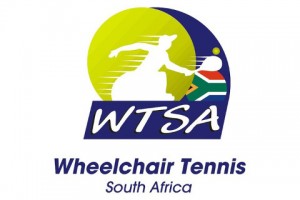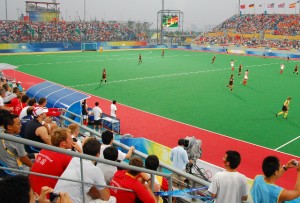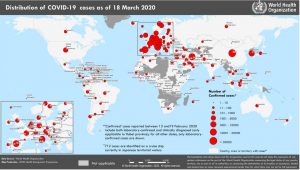From the new RRA: A high level of public awareness is a prerequisite for an effective response with social distancing measures to the COVID-19 outbreak.
Risk communication activities should emphasise that although this is a new and highly contagious disease, the vast majority of infected people will recover.
Easily accessible information should be available on the signs and symptoms (i.e. fever and dry cough) of COVID-19;
the contact details of local health services and national hotlines;
the population groups at high risk of severe disease;
social distancing measures that may be in place;
and travel advice.
All relevant audiences should be targeted, including through the use of appropriate minority languages.
- Social distancing measures should be implemented early in order to mitigate the impact of the epidemic and to delay the epidemic peak. This can interrupt human-to-human transmission chains, prevent further spread, reduce the intensity of the epidemic and slow down the increase in cases, while allowing healthcare systems to prepare and cope with an increased influx of patients.
Such measures should include:
(i) the immediate isolation of symptomatic persons suspected or confirmed to be infected with COVID-19;
(ii) the suspension of mass gatherings, taking into consideration the size of the event, the density of participants and if the event is in a confined indoor environment;
(iii)social distancing measures at workplaces (for example teleworking, suspension of meetings, cancellation of non-essential travel);
(iv) measures in and closure of schools, taking into consideration the uncertainty in the evidence of children in transmitting the disease, need for day care for children, impact on nursing staff,
potential to increase transmission to vulnerable grandparents;
(v) cordon sanitaire of residential areas with high levels of community transmission. - Ensuring the public is aware of the seriousness of COVID-19. A high degree of population
understanding, solidarity and discipline is required to apply strict personal hygiene, coughing etiquette, self-monitoring and social distancing measures. Community engagement and acceptance of stringent social distancing measures put in place are key in delaying and reducing further spread. - Prevention and control of COVID-19 in hospitals and long-term care facilities is an immediate priority in order to: (1) slow the demand for specialised healthcare, such as ICU beds; (2) safeguard populations vulnerable to severe outcomes of infection (3); protect healthcare workers that provide care; (4) minimise the export of cases to other healthcare facilities and the community.
- Every healthcare facility should initiate training for all staff and those who may be required for healthcare provision during surge capacity. Countries should identify healthcare units that can be designated to care for COVID-19 cases, to minimise transmission to non-cases and to conserve PPE.
Countries and healthcare institutions should identify additional facilities that can be used for the
cohorting of cases with mild symptoms, in the event that surge capacity is exceeded by healthcare facilities. The highest priority for use of respirators (FFP2/3) are healthcare workers, in particular those performing aerosol-generating procedures, including swabbing. - If resources or capacity are limited, rational approaches should be implemented to prioritise high-yield actions, which include: rational use of confirmatory testing, reducing contact tracing to focus only on high-yield contacts, rational use of PPE and hospitalisation and implementing rational criteria for de-isolation. Testing approaches should prioritise vulnerable populations, protection of social and healthcare institutions, including staff.
- National surveillance systems should initially aim at rapidly detecting cases and assessing community transmission. As the epidemic progresses, surveillance should monitor the intensity, geographical spread and the impact of the epidemic on the population and healthcare systems and assess the effectiveness of measures in place. In circumstances with capacity shortages and strict implementation of social distancing measures, surveillance should focus on severe acute respiratory infections, sentinel surveillance in outpatient clinics or collection of data through telephone helplines.
A strategic approach based on early and rigorous application of these measures will help reduce the burden and pressure on the healthcare system, and in particular on hospitals, and will allow more time for the testing of therapeutics and vaccine development.
Read more about the 6th RRA here
In South Africa, hotline and information contact numbers are: 080 002 9999 Mon-Frin 8am-4pm










